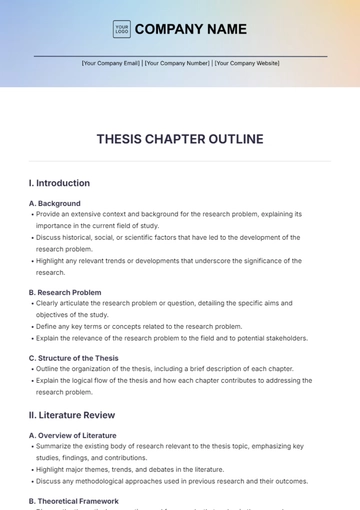Master’s Thesis
I. Introduction
The purpose of this Master's Thesis is to explore the impact of digital transformation on small and medium-sized enterprises (SMEs) in the global market. By analyzing recent trends and examining case studies, this thesis aims to understand the challenges and opportunities SMEs face as they integrate technology into their business operations. This research will contribute to the body of knowledge in the field of digital innovation and provide actionable insights for businesses aiming to thrive in a rapidly evolving digital landscape.
II. Research Background
Digital transformation has become a key driver of change across industries. In particular, SMEs face unique challenges in adopting new technologies due to resource constraints and a lack of technical expertise. Previous research has explored the role of digital tools in large organizations, but there is a gap in understanding how smaller businesses navigate this shift.
The objective of this thesis is to fill that gap by conducting an in-depth study on the factors influencing digital adoption in SMEs. The research will focus on identifying common barriers, best practices, and the potential long-term benefits of digital transformation.
III. Research Objectives
This thesis sets out to:
Investigate the technological barriers faced by SMEs.
Identify key factors that contribute to successful digital transformation in SMEs.
Explore the long-term benefits and risks of digital transformation for SMEs.
Offer recommendations for SMEs looking to digitally innovate while managing costs and risks.
IV. Methodology
The research methodology consists of both qualitative and quantitative approaches:
Surveys: A questionnaire will be distributed to SMEs across various sectors, aiming to gather data on their digital transformation experiences, challenges, and outcomes.
Case Studies: A series of case studies will be analyzed to understand the real-world applications of digital transformation in SMEs. These will be selected based on the diversity of industries, geographical locations, and company sizes.
Interviews: Interviews with industry experts and SME leaders will provide in-depth insights into the decision-making process behind adopting digital tools.
The data will be analyzed using statistical techniques to identify trends and draw conclusions.
V. Literature Review
Digital transformation is a broad field, and extensive research has been conducted on its effects on large corporations. However, SMEs are often left behind in these studies. According to Smith (2021), SMEs have unique characteristics that make digital adoption more challenging. Key obstacles include limited budgets, resistance to change, and a lack of skilled staff. Additionally, Jones et al. (2022) found that SMEs that successfully integrate digital tools often experience significant increases in efficiency and customer engagement.
A number of frameworks, such as the Technology-Organization-Environment (TOE) model, have been developed to explain how firms adopt digital innovations. This thesis will examine the applicability of these frameworks in the context of SMEs.
VI. Results
The data collected will be presented and analyzed to identify key findings. The following table shows a sample of data collected from survey respondents:
Company Name | Industry | Digital Tools Used | Barriers to Adoption | Benefits Experienced |
|---|
ViGlobe | Retail | E-commerce platform | High initial costs, technical skills gap | Increased customer base, streamlined operations |
StarTerra | Manufacturing | ERP software | Lack of in-house expertise | Improved data management, cost savings |
IntelShop | IT Services | Cloud computing | Resistance to change | Enhanced collaboration, scalability |
VII. Discussion
Based on the results, several trends can be observed. First, cost remains a significant barrier to digital adoption for SMEs. However, those who invest in digital tools report substantial long-term benefits, such as improved customer engagement and increased operational efficiency. Additionally, the study found that SMEs that have access to external expertise, such as consultants or partnerships, are more likely to successfully implement digital solutions.
The findings suggest that digital transformation, while initially challenging, can yield significant rewards for SMEs that overcome these barriers. Future research should explore the specific skills and training programs that would support SMEs in their digital transformation journey.
VIII. Conclusion
This thesis has explored the barriers and benefits of digital transformation for SMEs. While many face obstacles, the potential advantages—such as improved efficiency, customer reach, and competitiveness—outweigh the initial challenges. The insights gathered can help guide future research and provide practical recommendations for SMEs looking to navigate the digital landscape.
Prepared by: [YOUR NAME]
[YOUR EMAIL]
Thesis Templates @ Template.net






























